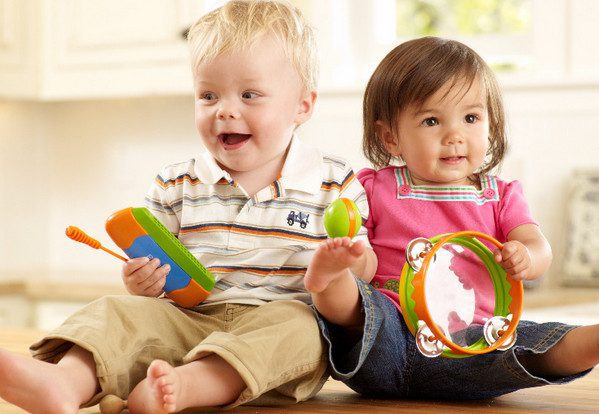
How to teach a child to listen to music?
How to teach a child to listen to music? This is the question parents ask when they watch their restless children run, play, and dance. The culture of listening to music consists not only in the fact that the child is immersed in the sounds of the melody, but also does this in a calm state (sitting in a chair, lying on a rug). How to teach a child to think while listening to music?
Why teach a child to appreciate music?
The emotionality and imagery of music develops a child’s memory and thinking, imagination and speech. It is important to include children’s songs and sing lullabies from an early age. The mental development of a child is impossible without the ability to listen and understand musical language. The task of parents is to gradually, unobtrusively lead the child to independently listen to and understand music.
 By the age of 2, children can respond emotionally to music. The expressiveness of the musical language encourages the child to clap, dance, rattle a rattle, and beat a drum. But the baby’s attention quickly switches from one object to another. The child cannot listen to music or dance to it for a long time. Therefore, parents do not need to insist, but should move on to another activity.
By the age of 2, children can respond emotionally to music. The expressiveness of the musical language encourages the child to clap, dance, rattle a rattle, and beat a drum. But the baby’s attention quickly switches from one object to another. The child cannot listen to music or dance to it for a long time. Therefore, parents do not need to insist, but should move on to another activity.
As the child gets older, he already feels the mood of the music. The active development of the baby’s speech allows him to talk about what he felt or imagined. Gradually, the child develops a desire to independently listen to melodies, sing them, and play simple musical instruments.
Parents should support any creative endeavor of the child. Sing along with him, read poetry, listen to songs and talk about their content. Only together with mom and dad, in the process of communicating with them, does the child develop a culture of listening to music and interacting with it.
Where to start?
Looking at how a child draws and plays, parents have a question: “How to teach a child to listen to music?” You shouldn’t immediately resort to serious classical works. The main criteria for music perception are:
- accessibility (taking into account the age and development of the child);
- gradualism.
To begin with, you can listen to children’s songs with your child. Ask about what mood the song evoked, what it sang about. So the child begins not only to listen to the words, but also learns to talk about what he heard.
Gradually, parents can make a whole ritual out of listening to music. The child sits comfortably or lies down on the carpet, closes his eyes and begins to listen. Foreign and Russian composers have numerous children’s plays. The length of the sound should not exceed 2–5 minutes. By the age of 7, a child will learn to listen to music for up to 10 minutes.
To diversify the perception of music, you can combine it with other activities. After listening, draw or mold from plasticine a hero of a musical work (for example, getting acquainted with the plays from “Carnival of the Animals” by Saint-Saëns). You can compose a fairy tale based on the play you listened to. Or prepare ribbons, balls, bells and spin with your mother to the sounds of the melody.
When listening to the play again, you can invite the child to voice it himself and repeat it by ear. To do this, first find out the mood of the music, choose musical instruments or objects for scoring. It is not necessary to have many children’s musical instruments in the house – any household item can become one.
Recommendations for parents
- Choose plays that are accessible to the child in terms of content.
- Prepare a comfortable place to listen to music.
- Do not be distracted by extraneous noises or activities.
- Parents listen to music with their child.
- Use questions to encourage people to talk about what they heard.
- Learn to distinguish musical instruments.
- Integrate the perception of music with other activities.
- Take your child to children’s music concerts.
- Teach your child the culture of listening to music by your own example.





